Get a Star Trek fan talking—and believe me, we love to talk—and inevitably you will hear about the television and movie franchise’s optimistic portrayal of the future. The twenty-third century depicted in the series is a liberal utopia. There is no racism, no poverty, no war, no pollution, and no money. Instead there is world government.
The United Federation of Planets, a sort of galactic U.N., meets in Paris. The Federation’s navy, whose primary mission is exploration and research, is headquartered in, where else, San Francisco. For a certain type of Trekker, the politics of the show is its appeal. "In a cynical twenty-first century consumed by dystopian visions of the future," writes author Mark Altman, "Star Trek is unique."
No one is more responsible for this sense of novelty than Star Trek’s creator, Gene Roddenberry, whose posthumous reputation more closely resembles that of a religious figure than a Hollywood producer. With his long hair, sideburns, and bushy eyebrows, his professorial clothing and theatrical sense, Roddenberry in his maturity took on the appearance of his friend Isaac Asimov, instructing generations of adoring fans in the tenets of IDIC, or "Infinite Diversity in Infinite Combinations," a philosophy of logic, inquiry, multiculturalism, and peace.
Roddenberry is lauded as a progressive icon, a prophet, the self-styled "Great Bird of the Galaxy" directing humanity to a limitless future in the stars. "There is no question in my mind that Roddenberry is a genius," says actress Diana Muldaur. "There’s no disputing his genius," says movie producer Harve Bennett. "He was a man who was able to reach out through my television and explain to me that I had a place in the world and in the future," says Whoopi Goldberg. Longtime Roddenberry friend and collaborator Bob Justman is more measured but just as complimentary. "His background was very humble, but he’s a man who educated himself and he’s found that his mind is fertile ground."
These quotes are from The Fifty-Year Mission by Edward Gross and Mark Altman, a two-volume, 1,300-page oral history documenting the history of the franchise from its inception to the release of Star Trek Beyond this past summer. The book is an extraordinary achievement of research and reporting, filled with inside scoop and backstage drama, fragile egos and the surmounting of great technical challenges. It's essential for diehards, as well as for readers interested in film and television production in general.
But there is a problem. Intended as a tribute to Star Trek and its creator, The Fifty-Year Mission ends up debunking the Roddenberry mythos. Liberal visionary? Maybe. But he was also an insecure, misogynistic hack.
Where No Man Has Gone Before
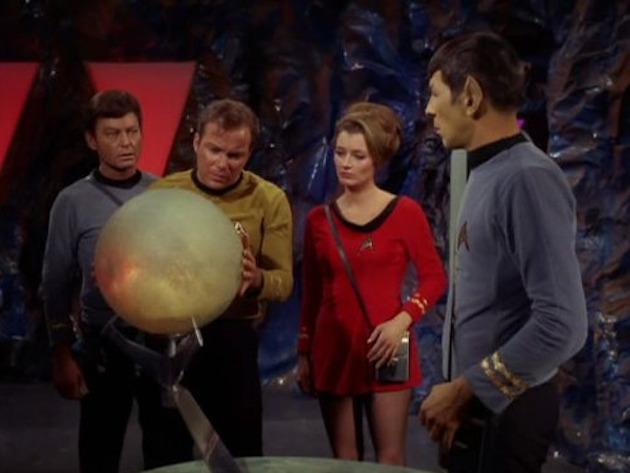
Born in El Paso in 1921, Gene Roddenberry moved to Los Angeles to become a police officer. He married and had two children. Then World War II happened. Roddenberry got a pilot’s license, enlisted, and flew B-17s in the Pacific. After the war ended he spent a few years piloting civilian aircraft for Pan Am. One of those planes, Flight 121 from Calcutta, crashed in Syria—a close call. In 1949 he joined the Los Angeles Police Department, writing speeches for the chief. He sold his first script in 1954. Two years later he left the force for television.
In 1964, after a decade as a freelance, Roddenberry registered a treatment with the Writer’s Guild for a show he described as "Wagon Train to the Stars." Lucille Ball’s Desilu Studios backed it. An initial pilot was filmed, featuring Leonard Nimoy as a pointy-eared science officer from the planet Vulcan. The network rejected it as outside the mainstream, but they filmed another pilot, with a new captain played by William Shatner. This time the network bit. Star Trek debuted on NBC on September 8, 1966.
Roddenberry’s insecurities were apparent from the start. He fought with the studios, the network, the writers, anyone who crossed his path. "During the first year," he says, "I wrote or rewrote everybody, even my best friends, because I had this idea in my mind of something that hadn’t been done and I wanted to be really there. Once we had enough episodes, then the writers could see where we were going, but it was really building people to write the way I wanted them to write."
But no one could do that. Roddenberry never stopped rewriting. "The problem," says his biographer Joel Engel, "was that he basically couldn’t write well enough to carry it off." For 25 years, a script never left Roddenberry’s hands without becoming worse.
For all of the control Roddenberry exercised over Star Trek, the franchise prospered only when it was under the aegis of others. As early as one month before the show’s premiere, an exhausted and embattled Roddenberry took a vacation. Television veteran Gene L. Coon, a Marine veteran of the Pacific, was hired as producer. "To a large degree," write Gross and Altman, "it would be Coon who would ultimately define the show creatively in the coming months."
The Star Trek that has imprinted itself on fans for decades is Gene L. Coon's. His shows deepened the relationships between Captain Kirk, Mr. Spock, and Dr. McCoy. He created the Klingons. There was more humor. Says writer David Gerrold, "Gene L. Coon created the noble image that everyone gives Roddenberry the most credit for." Shatner puts it this way: "Gene Coon had more to do with the infusion of life into Star Trek than any other single person."

With Coon at the helm Roddenberry turned to other projects, and to his own worst instincts. He was a horn dog. Affairs with police secretaries had been just the start. While on the force he had become friends with Jack Webb, the star and producer of Dragnet, who eased his entry into Hollywood and competed with him for the affections of actress Majel Barrett. Meanwhile Roddenberry also had an affair with the actress, singer, and model Nichelle Nichols. His relationship with Barrett was an open secret, lasting a decade before he divorced his wife. He and Barrett got married in 1969. (Their son, Rod, was born in 1974.) As for Nichols, Roddenberry cast her in a history-making role as Star Trek’s Lieutenant Uhura.
Ande Richardson, an assistant to Gene Coon who had worked for Martin Luther King Jr. and Malcolm X, says, "Gene Roddenberry was a sexist, manipulative person who disregarded women." She mentions several examples. "He would have women walking from Bill Theiss’s fitting rooms through to his office in the skimpiest outfits so he could perv them." In the twenty-third century of Roddenberry's imagination, it is unlikely that "perv" is still a verb.
Richardson tells the authors of The Fifty-Year Mission that Roddenberry was a chronic over-sharer, a teller of intimate and unusual stories, a divulger of quirks intended to probe the listener’s interest in depravity. She recalls one story that is so dirty I can’t print it in a family website like The Washington Free Beacon. "Again, why are you telling me this?" Richardson remembers asking. "But that was him: freaky-deaky dude."
The episodes Gene L. Coon supervised are considered to be Star Trek’s finest. But Coon did not last long. When Star Trek recaptured Roddenberry’s attention, he didn’t like what Coon had been doing. And Coon, who had grown tired of arguing with Roddenberry, Shatner, and Nimoy, was out.
This would become the pattern for Star Trek during Roddenberry’s lifetime. Writers and producers struggled to produce great drama within the utopian and arbitrary strictures of the series’ creator, before finally they gave up and left the show in disappointment. "Gene’s pattern is that he doesn’t work well with anyone," says Gerrold.
Only two relationships seem to have mattered to Roddenberry: his relationship with Barrett and his relationship with the fans. In both cases he was the object of adoration. Like many, he was surprised by the grassroots campaigns that saved Star Trek from cancellation after its first and second seasons. But an argument with NBC led him to distance himself from the series and bring in another show-runner who did not possess Coon’s gifts. The third and final season of Star Trek is considered its worst.
I’M STAR TREK!
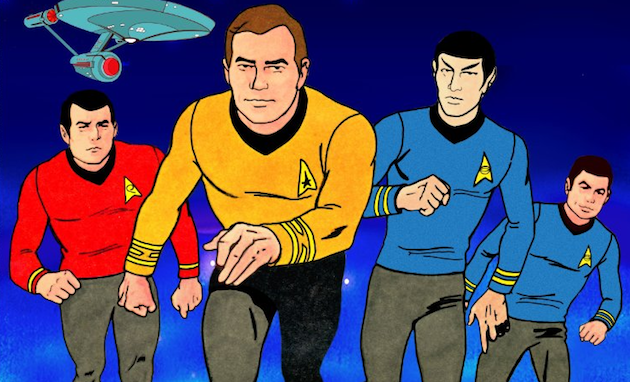
For whatever reason, though, the phenomenon would not die. The original series flourished in syndication and led to the publication of fanzines, to fan conventions. The Star Trek episodes novelized by science fiction eminence James Blish were extremely popular. Roddenberry saw a financial opportunity. He established a company, Lincoln Enterprises, selling props and frames of celluloid that had been used on the show. College lecture gigs paid well. "Gene had a big part in the conventions early on," says film producer Jon Povill. "Not just in terms of going and speaking there, but they were marketing ploys for him and Majel and Lincoln. It was all fostered to keep it alive and to take advantage, at least to some extent, of the syndication. He was terrific at marketing."
What he was not so terrific at was writing. The first attempt to resurrect the show, Star Trek: The Animated Series, lasted two seasons before being cancelled in 1975. Roddenberry had nothing. So he made a deal with Sir John Whitmore, an eccentric former racecar driver who wanted him to write a screenplay about a group of extraterrestrials, the "Council of Nine," who Whitmore believed were bound to return to Earth any day now.
Roddenberry set to work. He shared his draft with friends. "I read this script and the hair began to rise on the back of my neck," says writer Harold Livingston, "because that’s his, Gene’s, story. He was totally unaware of what he was writing. He was also writing his various sexual perversions, which I certainly don’t hold a grudge against, because I’ve got my own problems. But there’s something very, very amiss there."
The reason Star Trek exists today is money. Roddenberry needed it, and so did Paramount, which has owned the property since Desilu closed its doors in 1969. There long had been interest in a Star Trek movie, but nothing ever materialized. At one point in the 1970s, director Philip Kaufman of The Right Stuff was brought in for the feature film. But the pattern held: Kaufman and Roddenberry fought until Kaufman walked off.
Then the idea was to go back to television and produce Star Trek: Phase Two. The bible for the series and the concept for its feature-length pilot episode were finalized on July 15, 1977. That was about six weeks after the premiere of Star Wars. Science fiction and fantasy were now bankable genres.
"One day we went into a meeting in the conference room in the Paramount administration building," says producer Robert Goodwin. "There was Michael Eisner, Jeffrey Katzenberg, Gary Nardino, me, and Gene. In the course of that meeting, I got up and pitched this two-hour story. Michael Eisner slammed his hands on the table and said, ‘We’ve been looking for four years for a feature script. This is it. Now let’s make the movie.’"

Suddenly the plans for Star Trek: Phase II had to be tossed aside for the feature film. Harold Livingston wrote the first draft. As usual, Roddenberry rewrote it. "Then he brought it in," Livingston says, "gave it to us in a bright orange cover, and there it is: In Thy Image, screenplay by Gene Roddenberry and Harold Livingston. He took first position. We all read it and I was appalled, and so was everyone else. We sat around looking at each other and somebody said, ‘Who’s going to tell him it’s a piece of s—t?’"
The draft was marked November 7, 1977. Roddenberry’s opening scene: Kirk and a lady friend skinny-dipping. Starfleet hails. But Kirk is distracted when his girlfriend pulls him underwater. After a beat he surfaces, responds to the hail, and says, "I was attacked by an underwater creature." There is more. The crew of the Enterprise is sent to investigate a mysterious probe heading towards Earth. In one scene, "shapely female yeomans check out the young and inexperienced Xon, straight out of the Academy and the new science officer, and ask him about pon farr," or Vulcan puberty. Admiral Kirk tells another new member of the crew, the empathic Ilia from the planet Delta, "I know that Deltan females are not wanton, hairless whores." At this Ilia laughs and says, "On my world, existence is loving, pleasuring, sharing, caring." Kirk asks, "Have you ever sexed with a human?"
The struggle that followed between Roddenberry and the writers and producers and director trying to save him from himself was vicious and dispiriting. The film that resulted was a disappointment as well. Alan Dean Foster, who wrote the original treatment that became the basis for Star Trek: The Motion Picture, says:
By then I’d worked with Gene Roddenberry and George Lucas. In a nutshell, Roddenberry was standard Hollywood and George Lucas was anti-Hollywood. I never got the feeling from George that he particularly cared whether he received any great critical acclaim or even if he made a lot of money. I got the feeling that Star Wars was based on something he loved seeing as a kid and that’s what he wanted to make and he hoped he could make it so he could see it on the screen. I don’t think he cared about the fame or the money. Dealing with Lucas was like dealing with the quiet kid in the back of the class who hardly ever speaks up. Gene was, like, ‘I’M STAR TREK!’
The Best of Both Worlds
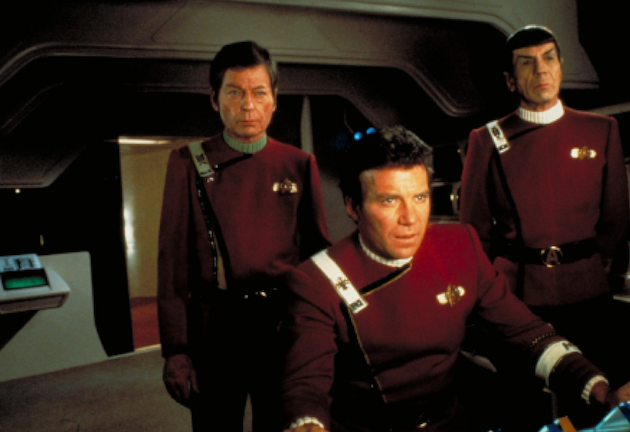
Here, too, events followed the template set by the original series. When Paramount went ahead with a sequel, it sidelined Roddenberry in favor of producer Harve Bennett and writer-director Nicholas Meyer, who assumed the role Gene Coon had played in the 1960s: making Roddenberry’s concept work as drama. The two films on which they collaborated, Star Trek II: The Wrath of Khan and Star Trek IV: The Voyage Home, are the best of the series. (Meyer also wrote and directed the excellent Star Trek VI: The Undiscovered Country, produced by Leonard Nimoy.)
The run of Star Trek: The Next Generation was similar. When Roddenberry, then in his sixties, agreed to produce another series for television, he saw it as a final chance to promote his idealistic view of humanity. There could be no conflict, he told his staff, among the crew of the Enterprise-D. By the twenty-fourth century humanity had progressed beyond argument, beyond worry, beyond grief, beyond passion, beyond tension. Unfortunately, these are the very things that create dramatic situations and the willing suspension of disbelief.
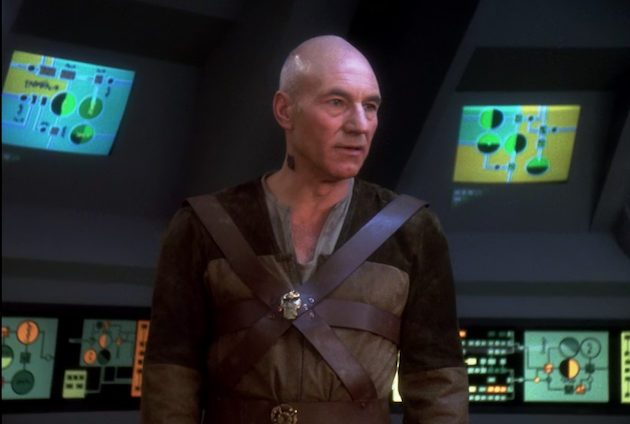
The first year of Next Generation was filled with infighting, antagonism, and abrupt departures. Many producers, writers, and crew left the show in frustration. So did two members of the cast. The petty psychological games played on the staff by Roddenberry and his attorney and business manager, Leonard Maizlish, were legendary. According to Altman and Gross, firings or resignations would follow "verbal abuse, a shift to increasingly worse office spaces, being denied parking spots, and worse." Picard never denied Worf a parking spot.
It was not until poor health limited Roddenberry’s involvement that the situation began to improve. Michael Piller was brought on as co-executive producer and lead writer. Like Coon and Meyer before him, Piller used Roddenberry’s universe not as the pedagogical instrument for a monolithic, quasi-spiritual doctrine, but as the backdrop for storytelling. The ingredients for success were already there: Patrick Stewart and Brent Spiner, excellent production values, a built-in audience. What made the show gel, however, were the scripts developed by Piller and his team, among them the classic two-part episode "The Best of Both Worlds." And success is the word. Star Trek: The Next Generation ran for seven seasons, spawned four movies, and inspired Star Trek: Deep Space Nine, Star Trek: Voyager, and Star Trek: Enterprise.
Roddenberry died in 1991. You could argue that the franchise he created has been more successful in the 25 years following his death than it had been in the 25 years before. In 2009, Star Trek was reincarnated on the big screen, this time under the direction of J.J. Abrams. Two sequels followed and another is in the works. Meanwhile Star Trek: Discovery is being prepped for CBS. So omnipresent has Star Trek become that longtime fans are complaining, as fans tend to do. A recent op-ed in the New York Times asked, "Who Stole My ‘Star Trek’?"
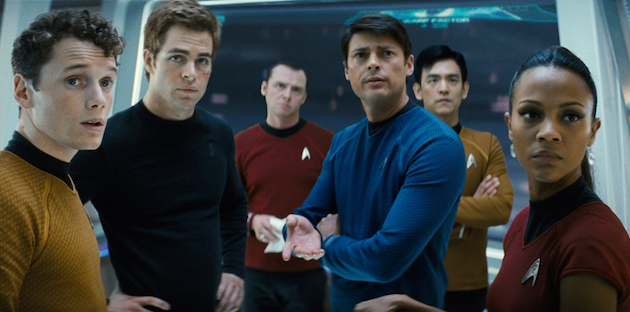
But Star Trek is not something you can steal. Star Trek is whoever is writing it at a given moment. Roddenberry, like many great innovators, fused two elements—Westerns and the aspirations of the New Frontier—to create something that in retrospect appears absolutely necessary and obvious. Star Trek: The Next Generation writer-producer Burton Armus, whose credits include NYPD Blue, says, "Look, Roddenberry can’t write very well. He came out with a concept that suddenly got hot, so he moved his house into this spaceship and he lived on it for the rest of his life."
It was the brilliance of the idea, and the psychological need it satisfies in audiences, that allowed Roddenberry to get away with being, in most respects, an incredible, insufferable jerk to his family, friends, and peers. After reading The Fifty-Year Mission, I know why Gene Roddenberry stuck so fiercely to his notion of a future where human nature has been transformed into pure good. It’s because he knew more than anybody how truly awful we can be.
Update Dec. 7, 3:55 P.M.: A previous version of this article stated that Alan Dean Foster wrote an uncredited draft of Star Trek: The Motion Picture. He wrote the original treatment that became the basis for the film.
